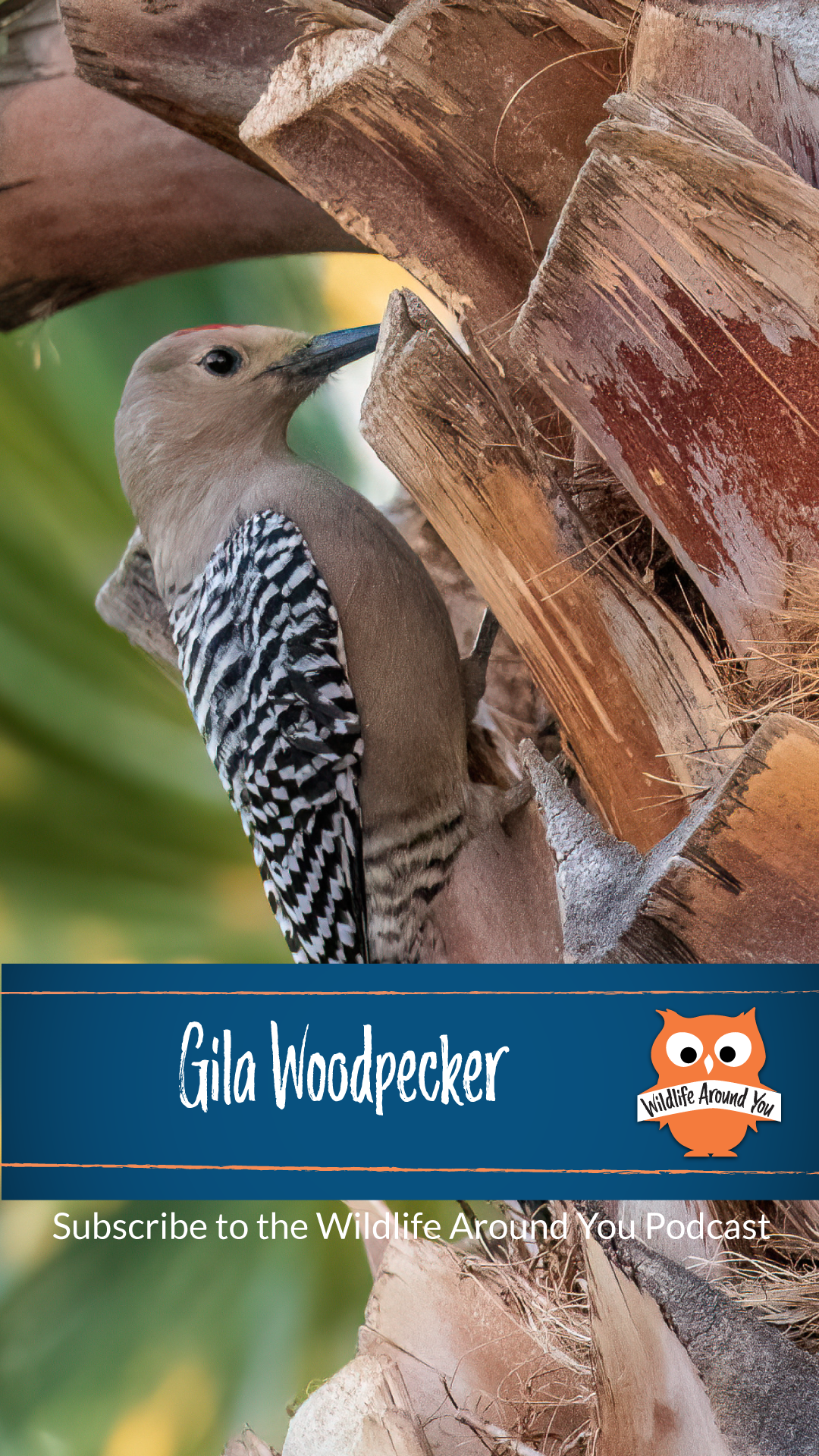Identification
- Medium-sized woodpecker, measuring about 8-9 inches in length.
- Males have a red cap on the top of the head.
- They have black and white barring on the wings, back and tail.
Habitat
- Native to the southwestern United States and Mexico.
- They inhabit arid habitats such as saguaro cactus forests, desert scrub, and mesquite woodlands.
Nesting
- Gila Woodpeckers create nesting cavities by excavating holes in cacti, dead trees, or sometimes wooden structures.
- They typically select large cacti like saguaros or dead saguaro arms to build their nests.
- The woodpeckers dig deep holes, usually in the upper part of the cactus or arm, creating a chamber for nesting and protection. The entrance is typically 2 inches in diameter and roughly 7-11 inches deep.
- The nest is seldom more than 25 feet above the ground.
Behavior
- Gila Woodpeckers are active during the day and are highly territorial.
- These woodpeckers are often seen hopping along tree trunks or cacti, using their stiff tail feathers for support.
Offspring
- They lay a clutch of 2-5 white eggs, which they incubate for about 11-14 days.
- The chicks remain in the nest for approximately a month before fledging.
Predators
- Common predators of Gila Woodpeckers include larger birds of prey, such as hawks and owls.
- They may also be targeted by bobcats, snakes, raccoons and squirrels, and occasionally domestic cats.
Diet
- Their diet primarily consists of insects, particularly beetles, ants, bees, and wasps.
- They also feed on nectar from various desert flowers, such as saguaro and ocotillo blossoms, and consume some fruits and berries.
Fun Facts
- Gila Woodpeckers are named after the Gila River in Arizona, where they were discovered.
- These woodpeckers have a specialized brush-like tongue with tiny bristles at the tip, which helps them collect nectar from flowers.
- They often create multiple holes in saguaro cacti, providing shelter for other birds like elf owls, finches, and sparrows.
- Gila Woodpeckers have adapted well to human presence and can be found nesting in man-made structures, such as utility poles and buildings. They have also learned to hang onto hummingbird feeders and lick up the sugary water and to steal dog food for porches.
- They are known for their drumming behavior, where they rapidly peck on resonant surfaces to communicate with other woodpeckers and establish their territory. Their territory typically stretches for 50 yards in all directions from their nest.
- After excavating a hole in a saguaro cactus, a Gila Woodpecker pair typically waits for several months before using it, allowing the inner pulp of the cactus to dry into a solid casing around the cavity.

